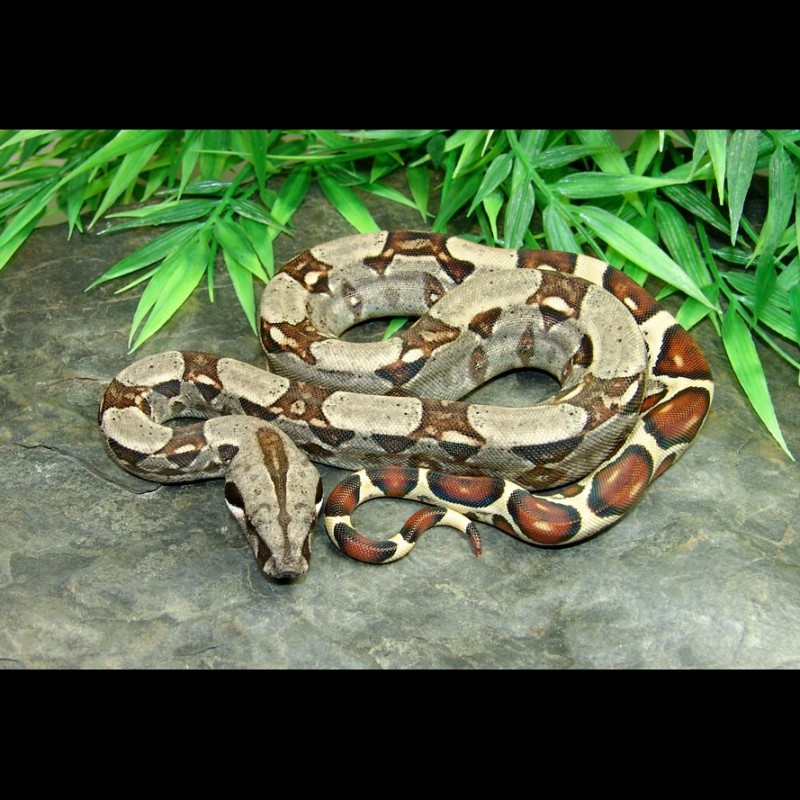

Heating/Lighting: A thermal gradient should be provided for all red tail boas, with one side of the tank being cooler and the other side being warmer. It is not recommended to house more than one snake together unless you are actively trying to breed them. Red tail boas are solitary animals except during breeding season, they don’t associate with other snakes. Hiding spots large enough for the snake to curl up in completely should be provided in both the cool and warm ends of the enclosure. Wood chips or shavings are not recommended, as they can give off fumes or dust which can irritate the snake’s respiratory system. The bottom of the cage should be lined with reptile carpet, newspaper, paper towels, or recycled paper, because these substrates are easy to clean. A small snake in a big cage can become overwhelmed and stressed. Juveniles do best in small enclosures that make them feel secure. However, take note that any screen top cage will make it more difficult to provide adequate humidity. Many different enclosures work well for red tail boas, including plastic tub containers, melamine racks, or any of the commercially available glass aquariums made for reptiles. The enclosure for a red tail boa needs to be well constructed, as they are very strong and can be escape artists. Housing: The enclosure should be big enough so that the length of two adjacent sides is equal or greater than the length of the snake. They will sometimes weigh up to 50 pounds and live to 20+ years of age. There can be a wide variation in size between subspecies, with females larger than males. Found primarily in rain forest habitats, they also do well in more arid conditions. There are a number of subspecies spread across these areas, but their captive care and husbandry is the very similar across all types. The red tail boa (Boa constrictor ssp.) is a large snake in the Boid family, commonly found in South America, Central America, southern sections of North America, and the Caribbean.


 0 kommentar(er)
0 kommentar(er)
